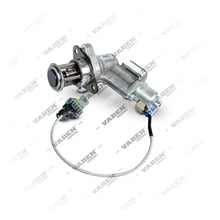Egr Valve
The EGR valve is one of the most critical systems used in heavy-duty vehicles to ensure environmentally friendly and efficient operation of the engine. The Exhaust Gas Recirculation (EGR) system reduces the combustion temperature by redirecting exhaust gases back into the combustion chamber, thus reducing NOx (Nitrogen Oxide) emissions and optimizing fuel consumption. VADEN ORIGINAL EGR valves offer maximum performance and long-lasting use for heavy-duty engines.












